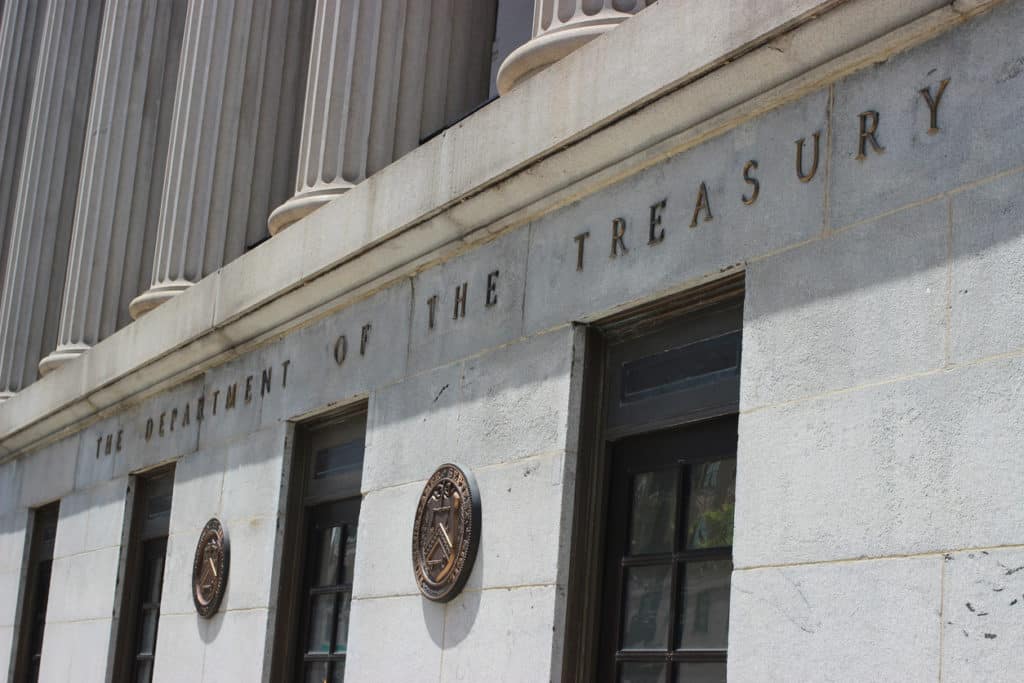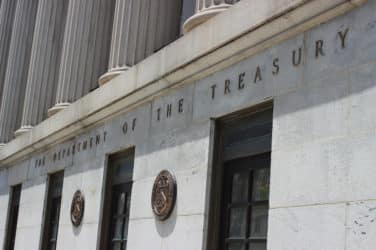
MFA urged the U.S. Securities and Exchange Commission (SEC) to mandate major revisions to the Fixed Income Clearing Corporation’s (FICC) proposed Treasury clearing rules in a supplemental comment letter.
The letter stresses that fixes to the proposal are necessary to ensure a smooth transition to mandatory central clearing, avoid disrupting the Treasury markets, and safeguard the U.S. government’s ability to issue and refinance its debt efficiently. The FICC rulemaking was mandated by the SEC Treasury Clearing rule that was finalized in 2023. This is MFA’s third letter on the FICC Treasury clearing rules.
“FICC’s proposal jeopardizes the Treasury markets—the foundation of the global financial system. The proposal will harm capital markets, hinder U.S. economic competitiveness, and increase the cost of government borrowing,” said Bryan Corbett, MFA President and CEO. “To foster a stable and efficient transition to central clearing, the SEC must take a more active role in the FICC rulemaking to ensure critical changes are implemented.”
MFA’s letter highlights how the proposal jeopardizes the stability of Treasury markets by not guaranteeing secure and effective access to clearing at FICC. It urges the SEC to ensure that FICC implements critical changes in advance of implementation to preserve the liquidity and investor confidence in the Treasury markets.
To meet the needs of indirect participants, including alternative asset managers, and create a resilient Treasury clearing ecosystem, MFA recommends that FICC and the SEC:
- Address the forced bundling of clearing and execution services to prevent anti-competitive practices
- Facilitate broader cross-margining opportunities to reduce clearing costs and enhance market efficiency
- Recalibrate the minimum segregated margin requirement for indirect participants instead of delaying this amendment
- Expedite addressing porting of customer positions and other default management practices
- Broaden the inter-affiliate exception to enable more effective liquidity and collateral management
Read the full comment letter here.
Source: MFA
SIFMA and EY Publish U.S. Treasury Clearing Compliance Considerations Report to Guide Industry Transition to Central Clearing
SIFMA and Ernst & Young LLP (EY US) published “U.S. Treasury Central Clearing – Industry Considerations Report,” designed to capture and organize the various considerations and activities market participants should evaluate while assessing and completing preparations for the upcoming U.S. Securities and Exchange Commission (SEC) Treasury Clearing Rule compliance dates. It is intended to be utilized as a guide by sell-side and buy-side market participants alike as they implement changes in response to new U.S. Treasury clearing requirements.
“Treasury securities play a key role in the U.S. and world economies. SIFMA has long supported efforts to make the Treasury market more resilient. At the same time, we recognize the need to ensure liquidity is not negatively impacted,” said Joe Seidel, SIFMA Chief Operating Officer. “As we transition to central clearing in compliance with the new SEC rules, it is important that the industry focuses on preparedness efforts to ensure as little market disruption as possible. The report is designed to offer a roadmap of considerations and actions firms need to take now to be ready for the coming deadlines. This is also part of SIFMA’s broader efforts, including the development of standard clearing documentation, to coordinate a smooth transition with the industry.”
Clearing transactions involves a clearing agency stepping in between a buyer and seller to handle certain elements of transaction processing, manage risk and pay down obligations. In December 2023, the SEC approved a final rule which mandates the clearing of certain eligible secondary market transactions in U.S. Treasury securities. It triggered a significant structural change to the U.S. Treasury market and will have significant impacts on broker-dealers, institutional investors, asset managers, hedge funds, interdealer brokers, principal trading firms, banks, and covered clearing agencies (CCAs). The first compliance date is March 31, 2025, by which time CCAs must implement enhanced practices as outlined in the respective rulebook of each CCA, which include risk management, margin, customer asset protection, and access to clearance and settlement services. The second compliance date is December 31, 2025, by which time direct participants of CCAs must comply with the requirements to clear eligible cash secondary market transactions. The third compliance date is June 30, 2026, by which time direct participants of CCAs must be compliant with the requirements to clear eligible Treasury repo transactions.
“The SEC’s new Treasury clearing requirements represent a pivotal shift for the U.S. Treasury market, and firms must act quickly to meet the upcoming compliance deadlines,” said Brendan Maher, Managing Director, Financial Services Consulting, EY. “This report offers market participants a practical framework to navigate this complex transition, highlighting key considerations and actions. At EY, we are committed to helping our clients adapt to these new regulations by providing actionable insights and strategic guidance to ensure a seamless and efficient transition to central clearing.”
The SEC Rule will drive a number of changes to the overall U.S. Treasury market structure and require the integration of market participants who will now be mandated to centrally clear transactions for the first time. New CCAs may also emerge, and market participants may decide to connect to one or more CCAs to support their trading and clearing strategies. Such changes to the market will require new operations and capabilities to accommodate increased clearing volumes and new relationships between firms.
The report details the critical activities that institutions should consider as they design and implement a process for Treasury clearing. The primary objectives of the report are to:
- Provide an implementation blueprint for industry participants on implementation priorities.
- Identify the key steps to operationalize change across different clearing access models.
- Surface key issues, open questions, and gaps in market structure and provide recommendations on the path to resolution.
- Provide views on the target state transaction lifecycle from execution through margin processing, including proposed high-level transaction flows.
- Provide insights on implementation dependencies across work efforts, where possible.
- Serve as an educational resource on the rule and its implications.
The report includes input and subject-matter analysis from market participants on both the buy-side and sell-side that was gathered 1) via a survey issued to SIFMA member firms by SIFMA and EY, 2) from information workshops hosted with SIFMA member firms, and 3) from bilateral conversations with market participants. It is available at the following link: https://www.sifma.org/resources/general/us-treasury-central-clearing-industry-considerations-report/
Source: SIFMA





